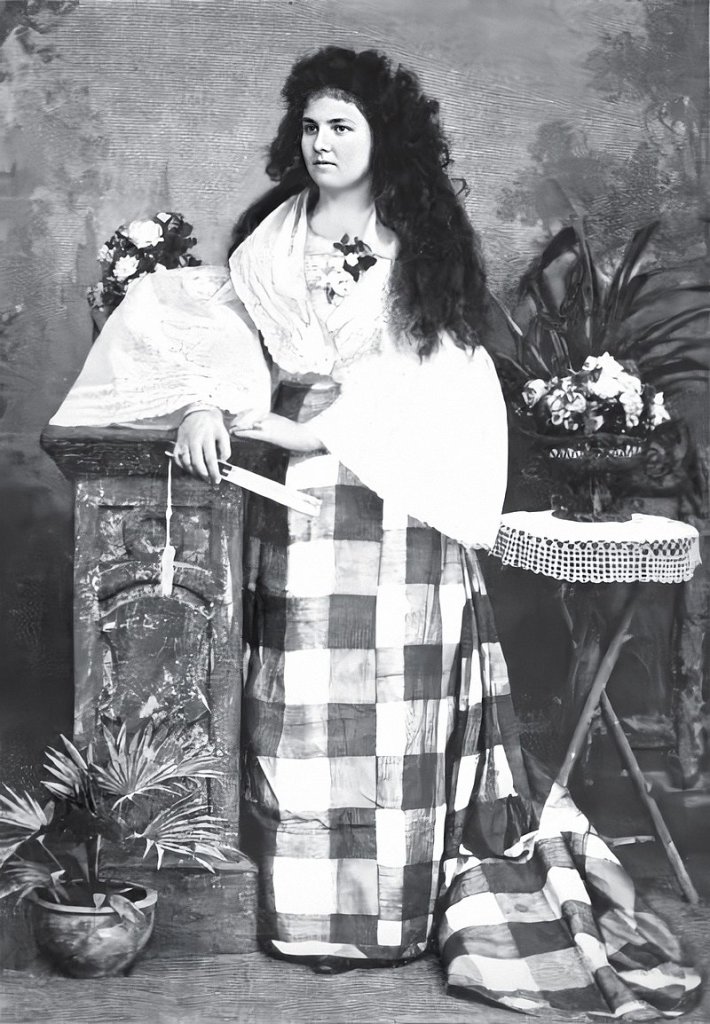On October 3, 1876, Marie Josephine Leopoldine Bracken was born at Victoria Barracks in Hong Kong. Her father was an Irishman serving in the British Army. That explains an Irishwoman being from Hong Kong easily enough. However, how she ended up joining the Filipino rebellion against their Spanish colonizers is a bit more of a story.
Bracken, who went by Josephine, had a difficult childhood. Her mother died shortly giving birth and her father gave her up for adoption. Bracken was taken in by her godfather, an American named George Taufer. Despite losing his sight, Taufer was a respected engineer who worked at the Hong Kong Fire Department’s pumping plant.
Bracken later recommended that her adoptive father visit a renowned ophthalmologist who had previously practiced in Hong Kong. The doctor was a Filipino named José Rizal. However, Rizal was also an outspoken nationalist and writer who strongly advocated for Philippine independence from Spain. As a result, Rizal became a political exile in Dapitan, Zamboanga del Norte in the southern Philippines.

On February 5, 1895, Bracken and Taufer arrived in Manila. Later that month, they sailed to Dapitan in search of Rizal. Although they found the famous doctor who treated Taufer for weeks, his double cataract was beyond help. However, the trip did result in Rizal’s infatuation with young Bracken. She reciprocated and the two agreed to marry. Taufer disapproved of the relationship, not because of Rizal being Filipino or 15 years older than Bracken, but because he didn’t want to lose his adopted daughter. In the end, Taufer conceded and allowed Bracken to stay in the Philippines.
On March 14, Bracken and Rizal’s sister, Narcisa, accompanied Taufer to Manila on his way back to Hong Kong. Before returning to Dapitan, Bracken met with more of Rizal’s family in Manila. Rizal’s mother gave Bracken her blessing to marry her son. However, Rizal’s marriage application was denied by Father Antonio Obach in Dapitan. Although Bracken was Catholic, Rizal was a Freemason and their marriage in the church required special dispensation from the Bishop of Cebu.

When the dispensation was not given, Rizal’s mother suggested the couple enter into a civil marriage. Bracken returned to Dapitan where she and Rizal lived as common-law husband and wife beginning in July. In a letter to Trinidad dated January 15, 1896, Rizal wrote, “We had no quarrels and we always laugh happy.” In March, the couple had a son, Francísco Rizal y Bracken, who was born prematurely and died shortly after birth. Both Bracken and Rizal became unhappy in the marriage.
In 1896, the Filipino rebellion that Rizal was associated with erupted into a full-blown revolution and national uprising. To escape the violence, Rizal obtained leave from Governor Ramón Blanco to serve as a medical volunteer in Cuba. Bracken and Rizal left Dapitan on August 1. However, with violence in the Philippines growing, the Spanish government arrested Rizal in Spain en route to Cuba. He was imprisoned in Barcelona for treason, rebellion, and sedition on October 6 and sent back to Manila that same day.

Upon his return to the Philippines, Rizal was imprisoned at Fort Santiago. Bracken visited him in prison where he lamented the decline of their marriage and sought to make amends. The evening before his execution on December 30, Rizal affirmed his love for his wife. Before numerous witnesses, including the head of the Spanish Supreme Court, Rizal retracted his anti-Catholic Mason ideals in a written document, signed a Catholic prayer book, and recited Catholic prayers. Following Rizal’s return to the faith, Father Vicente Balaguer married him and Bracken on the morning of his execution. Rizal gifted his wife a copy of Father Thomas á Kempis’s De La Imitacion de Cristo y Menosprecio del Mundo with the dedication: “To my dear and unhappy wife, Josephine, December 30th, 1896, Jose Rizal.” Following his execution, Bracken’s request for Rizal’s body was denied and he was buried in an unmarked grave.
Bracken swore to avenge her husband’s death. At 20 years old, she joined General Emilio Aguinaldo’s revolutionary movement in Cavite on January 6, 1897. Bracken tended to sick and wounded soldiers and operated reloading jigs for Mauser cartridges. Like the rest of the rebels, she was often hungry and barefooted. Despite this, she reportedly participated in battles and once led a charge in which she shot and killed a Spanish officer with her rifle.

Bracken was later summoned by Governor General Camilo Polavieja who gave her an ultimatum to leave the country or face imprisonment and torture. Her adoptive father being an American citizen, the American consul in Manila advised her to heed the warning and Bracken voluntarily returned to Hong Kong. There, she lived with Taufer until his death. She married Vicente Abad, a Filipino mestizo from Cebu who represented Taufer’s tobacco company, in early 1900. The couple had a daughter, Dolores Abad y Bracken, who was born on April 17 that same year. Bracken, who began suffering from tuberculosis at the time of her wedding, died on March 15, 1902 at the age of 25. Despite her relationship with the national hero of the Philippines, Bracken’s short and tumultuous life remains comparatively obscure.


